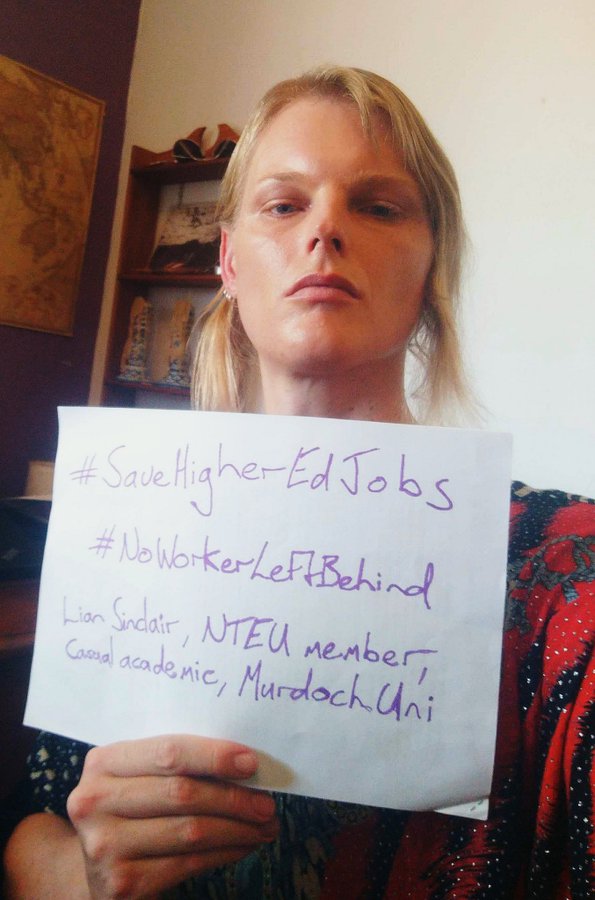by Pat Thomson, Patter: https://patthomson.net/2021/01/04/academic-writing-choices-learning-from-blogging/
I've been thinking about academic writing and blogging again. I've been wondering what we might learn from thinking about the writing that bloggers do.
Academic blogs are not all the same. They can be categorised in various ways. I've been thinking about categorising blogs as “action” - focusing on what they seem to want to do with and for their readers. So using “action’ as a lens, I immediately think of academic blogs that aim primarily to:
Some blogs of course offer a limited and selective combination of these actions - but their readers may be attracted primarily by, and to, only one of them.
Inside the blog, turning the action in text, the writing. Individual academic bloggers, or a small blog team, often develop particular approaches to writing – or “voice” as it is sometimes called. Newspaper style blogs cant do this and so they have guidelines, and often offer strong editorial support, to ensure some consistency of style over and above word length.
Bloggers might have preferences for writing that has:
- a particular mode of address – is the reader addressed directly – as in “you” – or assumed and not mentioned at all.
- writer presence – is the blog writer an “I” or an assumed absent presence? Writer presence can also be related to the larger associated question of how much is revealed about the “I” and their particular circumstances.
- ratio of active to passive voice – academic writing often uses a lot of passive voice; switching to writing more sentences which use active voice creates a less formal read and feel.
- word choice – academic writing uses a lot of abstract terms (generally nominalisations or what Helen Sword calls zombie nouns). Reducing abstract terms and translating them into plain English reduces the ‘nouniness’ (as Michael Billig calls it) of writing and makes it more accessible. But including correct disciplinary terminology may be important if the aim of the blog is to inform, teach or review.
- sentence length and variety – academic writing often uses long sentences with multiple clauses. Shortening sentences makes prose easier to read - and easier to gloss over. Varying sentence length may be important in retaining attention. But if the blog aims to review or inform, readers may be OK to deal with something that reads more like conventional academic prose, and even be insulted if the writing appears to “talk down” to them.
- formality/informality and use of vernacular - using “speech-like” sentence constructions and popular terms, cultural references, scatological references etc can make a blog post read more or less like the writer is one of your friends, or someone you’d like to be your friend. If you are writing to inform, review, provoke, then friendship may or may not be what you have in mind.
- referencing and links out – academic writing is characterised by its connections with traditions and literatures. These are most often provided through referencing and, depending on their number, can make the reader read more slowly. If the blog post reader expects something easy to get through, lots of referencing is a risk. But if the intent of the blog post is to inform, review, report work in progress, or provoke, then some degree of referencing is unavoidable. Are these connections to be provided through hyperlinks or to be made unavoidable and obvious through more conventional citation?
- invention of categories and terminology – researchers often invent new terms for their research results or for particular approaches or techniques they have developed. Is this blog to have a personal stamp through the use of particular set of terms? Teaching and advice blogs often generate a specific lexicon which mark them off from others.
- use of anecdote – writers use anecdote as a means of engaging readers, presenting a way into an issue and/or illustrating an important point. Anecdote is used extensively in blogs which share experience, but is also used regularly for informing, reporting work in progress, teaching and providing advice.
- choice of images – most blogs use images, but variously. Reviews tend not to, and provocations and debates may not. Images may be integral to the substantive matter in reports of research. In most other blogs, images are used to illustrate a point, or to attract attention.
So these are choices that blog writers need to consider. Together they constitute the particular personality of the blog. Now of course, most of these author choices apply to any form of academic writing, not just blogs. I am considering writing more about them in this new year.
I have a hunch that writing more about writing choices in blogs might help illuminate the variations and framings of what you can actually DO as an academic writer. And perhaps focusing on writer choices might help doctoral and early career researchers in particular consider how academic writing can be not a one thing, but many.
Photo by Alex Knight on Unsplash








